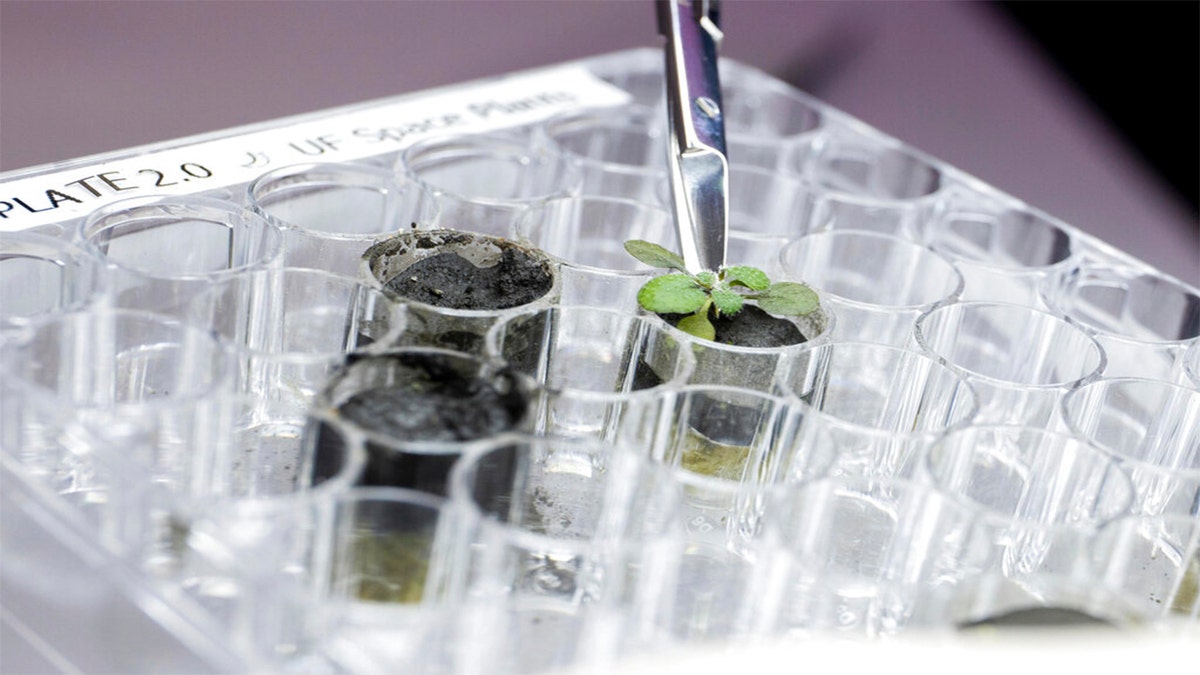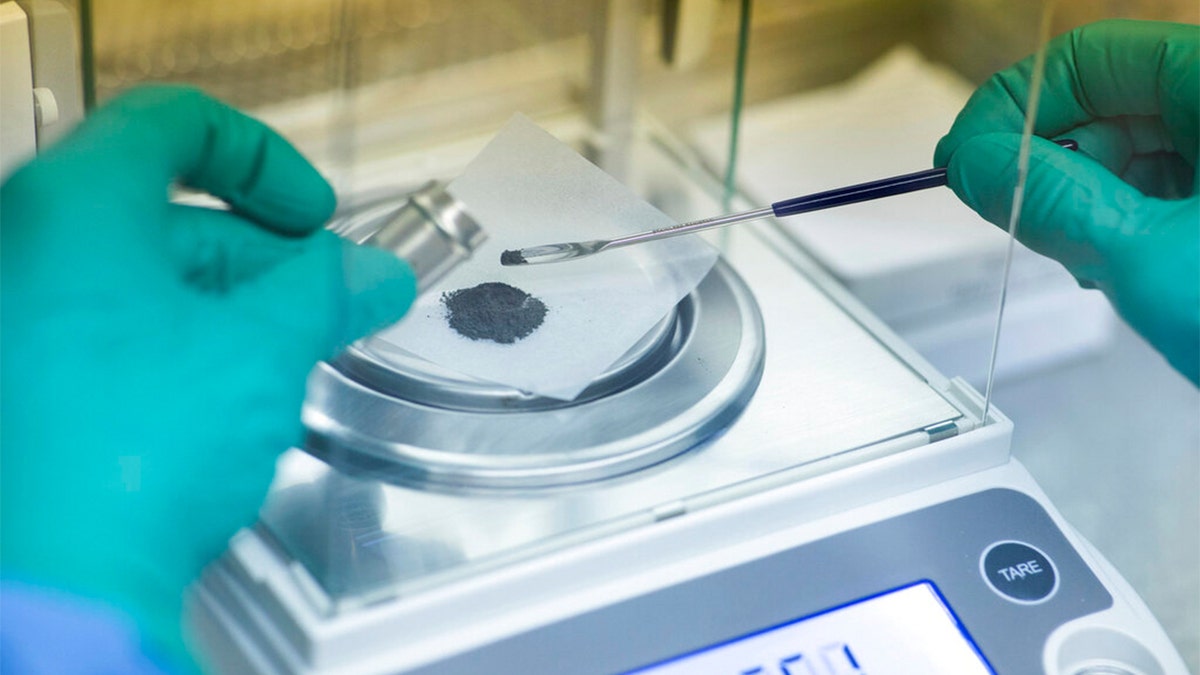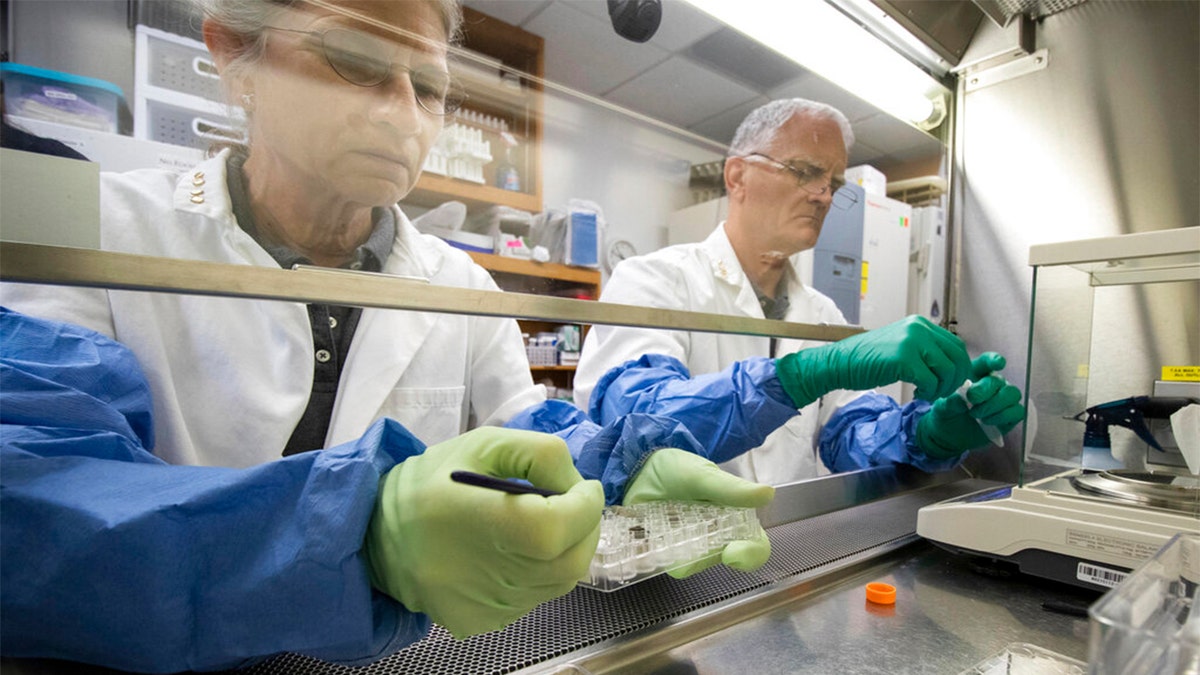Fox News Flash top headlines for May 12
Fox News Flash top headlines are here. Check out what's clicking on Foxnews.com.
For the first time, scientists have successfully grown plants in lunar soil brought back to Earth by NASA's Apollo astronauts.
Researchers had no idea if anything would sprout in the harsh moon dirt and wanted to see if it could be used to grow food by the next generation of lunar explorers.
"After two days, they started to sprout!" said Anna-Lisa Paul, a professor in Horticultural Sciences at the University of Florida, who took part in the experiment. "Everything sprouted. I can’t tell you how astonished we were! Every plant – whether in a lunar sample or in a control – looked the same up until about day six."

n this 2021 photo provided by the University of Florida, Institute of Food and Agricultural Sciences, a researcher harvests a thale cress plant growing in lunar soil, at a laboratory in Gainesville, Fla. (Tyler Jones/UF/IFAS via AP)
Robert Ferl of the University of Florida's Institute of Food and Agricultural Sciences and his colleagues planted thale cress in moon soil returned by Apollo 11's Neil Armstrong and Buzz Aldrin, and other moonwalkers.
All of the seeds sprouted. But within a week, the coarseness and other properties of the lunar soil stressed the small, flowering weeds so much that they grew more slowly than seedlings planted in fake moon dirt from Earth. Most of the moon plants ended up stunted.
FIRST IMAGE OF BLACK HOLE AT CENTER OF MILKY WAY RELEASED BY ASTRONOMERS
The longer the soil was exposed to punishing cosmic radiation and solar wind on the moon, the worse the plants seemed to do. The Apollo 11 samples — exposed a couple of billion years longer to the elements — were the least conducive for growth, scientists said.
Moon dirt is full of tiny, glass fragments from micrometeorite impacts that got everywhere in the Apollo lunar landers and wore down the moonwalkers' spacesuits.

In this 2021 photo provided by the University of Florida, Institute of Food and Agricultural Sciences, Rob Ferl weighs lunar soil at a laboratory in Gainesville, Fla. (Tyler Jones/UF/IFAS via AP)
One solution might be to use younger geologic spots on the moon, like lava flows, for digging up planting soil. The environment also could be tweaked, altering the nutrient mixture or adjusting the artificial lighting,
More than 800 lbs. of moon rocks and soil were brought back by six Apollo crews. Most of the lunar stash remained locked away, forcing researchers to experiment with simulated soil made of volcanic ash on Earth. NASA finally doled out 12 grams to the University of Florida researchers early last year, and the long-awaited planting took place last May in a lab.
OVER 90% OF GREAT BARRIER REEF CORAL STUDIED THIS YEAR WAS BLEACHED
NASA said the timing for such an experiment was finally right, with the space agency looking to put astronauts back on the moon in a few years.
The ideal situation would be for future astronauts to tap into the endless supply of available local dirt for indoor planting versus setting up a hydroponic, or all-water, system, scientists said.

In this 2021 photo provided by the University of Florida, Institute of Food and Agricultural Sciences, Anna-Lisa Paul, left, and Rob Ferl, work with lunar soils in their laboratory in Gainesville, Fla. (Tyler Jones/UF/IFAS via AP)
"The fact that anything grew means that we have a really good starting point, and now the question is how do we optimize and improve," said Sharmila Bhattacharya, NASA's program scientist for space biology.
CLICK HERE TO GET THE FOX NEWS APP
The Florida scientists hope to recycle their lunar soil later this year, planting more thale cress before possibly moving on to other vegetation.
Results of the landmark study were published Thursday in Communications Biology.
The Associated Press contributed to this report.


